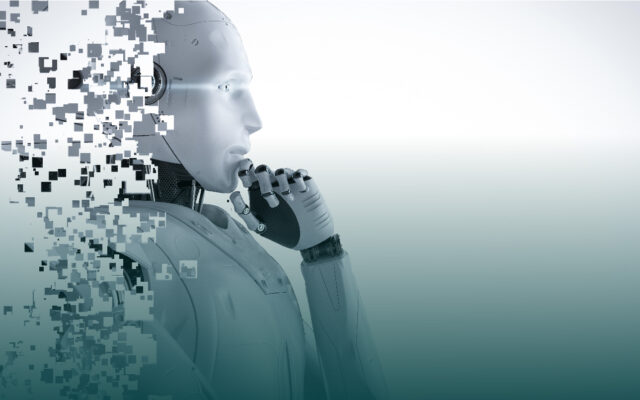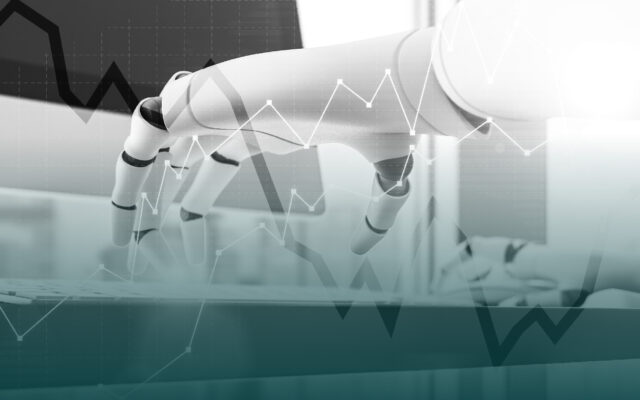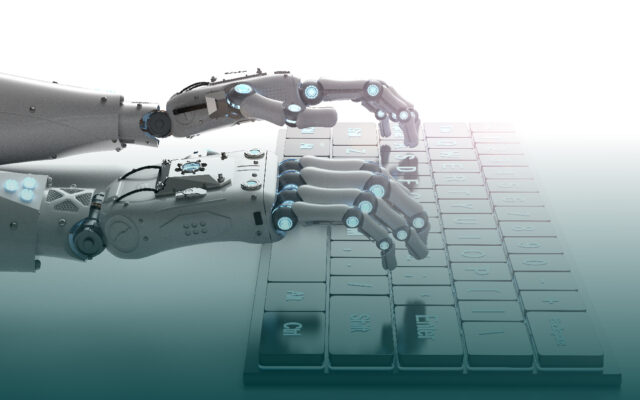In a rapidly developing world, businesses must stay ahead of the curve. For manufacturers, this means exploring and implementing new technologies to streamline production and create a better-finished product. Artificial intelligence is one such technology beginning to make waves in the industry. This blog post will explore how AI is used in manufacturing today and what benefits it offers.
History and Development of AI in Manufacturing
The development history of AI in manufacturing has seen tremendous advancement over the past few decades. It began in the late 1980s when AI was used for robotics and automation. This early usage focused on automating manual processes, allowing for higher levels of production and efficiency. At this time, AI was primarily used for repetitive tasks such as part-handling and sorting.
In the 1990s, AI technology advanced further, introducing more sophisticated algorithms and robotics control systems that allowed for improved decision-making. This enabled greater customization of industrial machines and a reduction in production costs. With more efficient production methods, manufacturers could increase their output at a lower cost. In addition, AI-enabled monitoring systems allowed for better quality control and precision during production cycles.
As we enter the 21st century, advances in AI technology continue through improved sensors for autonomous vehicles and advanced predictive analytics for manufacturers. They can now glean valuable insights from data collected over time about optimizing their operations for maximum efficiency without sacrificing quality or safety standards for workers and consumers alike.
Artificial general intelligence (AGI) is also being explored; this technology seeks to build machines that can think like humans when presented with a problem—a potential future development that could transform manufacturing if achieved successfully.
The Impact of AI on the Manufacturing Industry
AI technologies have made manufacturers more efficient, productive, and streamlined. With machine learning algorithms integrated into production processes, factories can inform their business decisions using data gleaned from AI-equipped robots, machine vision systems, and sensing devices – allowing for precise control over productivity and quality assurance. This has hugely minimized the need for manual labor to operate factories, thus increasing efficiency even further and reducing operating costs drastically. What was once dreamt of as a futuristic concept is now a tangible reality transforming industries worldwide.
Increased Efficiency
Manufacturers are using AI-enabled robots to automate production processes, eliminating the need for manual labor. These robots are programmed with sophisticated algorithms that allow them to perform tasks without human intervention or supervision. For instance, robots can assemble car parts quickly with high precision and accuracy. This boosts productivity and reduces errors in production. Automated machines can work around the clock to maximize output while minimizing costs associated with labor and production time.
Cost Savings
Regarding cost savings, AI-based robotics have significantly reduced labor costs for factory owners since they do not need to hire extra personnel for specific tasks like product assembly or material handling. Furthermore, investments in this advanced technology can increase productivity per worker hour, leading to higher profits for businesses that adopt it early in the process.
Improved Product Quality
Thanks to AI, machines in the industrial environment can now make decisions by themselves based on complex data analysis. For instance, AI can assess conditions and identify problems with high accuracy due to its superior cognitive capabilities. This means manufacturers can reduce downtime since they don’t need to wait for technicians to find and fix issues. In addition, this ensures quality control since AI can detect aberrant results very quickly.
Safety
AI also provides safety benefits by monitoring factory working conditions to detect potential hazards early on. As a result, it is becoming easier for companies to meet all the compliance regulations required by law in their industry. Furthermore, this advanced monitoring system helps protect workers from injury or illness caused by hazardous environments such as extreme temperatures or noxious fumes.
Personalized Service
In addition to optimizing their operations, manufacturers can leverage AI tools to offer better customer experience and personalized services directly to customers, such as customized product design options or tailored recommendations based on individual preferences. AI-powered chatbots have further enabled these companies to offer faster customer service by responding rapidly to inquiries through automated conversations and providing automatic product support functions such as installation assistance or troubleshooting.
3 Latest Advances in AI and Their Application in Manufacturing
According to McKinsey, manufacturing faces tremendous overhead expenses in the semiconductor sector. Production cycles for semiconductor chips are lengthy and involve numerous phases. For instance, turning a silicon wafer into a finished product takes many weeks or months. Each stage of the procedure involves a different type of quality assessment. Production is halted and delayed since failures can happen at any point during the production process, and information concerning flaws isn’t necessarily linked between various stages of production.
In semiconductor manufacturing, AI has enabled advanced process control solutions for more precise and effective yield management from chip designs. This involves using sophisticated algorithms to identify chip design flaws early in the production process and correct them before further costly delays occur. Additionally, artificial neural networks are being trained on massive datasets related to semiconductor fabrication processes to improve design integrity and optimize cycle times throughout each step of the manufacturing flow.
Over the long term, AI might earn $85 to $95 billion for semiconductor businesses.
In steelmaking, artificial neural network techniques monitor and optimize production processes. For example, a neural network system can be trained with data from multiple steel mills to improve quality control measures throughout the production line. Additionally, AI solutions can be implemented in ironmaking stages such as smelting and casting, where temperature control is critical for obtaining desired output grades of steel alloys.
AI has numerous applications in the steelmaking industry, such as intelligent fault and fraud diagnosis (FDD), which enables the automatic detection of defects within steel products during the post-production inspection phase using infrared imaging sensors or image recognition software. This helps reduce costs associated with manual inspection while ensuring higher quality control standards during steel production.
Finally, renewable energy sources such as solar panels rely heavily on AI-based predictive analysis systems to maximize energy conversion rates while minimizing waste material generated. For example, solar panel makers use complex software systems with advanced DL algorithms to adjust their output levels depending on current weather conditions and previous performance metrics resulting from data gathered over time from multiple sources within the solar farm. All these recent advances have allowed manufacturers across all industries to focus less on repetitive manual processes related to quality control and more on creative problem-solving tasks that require more sophisticated solutions for more efficient results.
5 Use Cases of AI in Manufacturing
Two-thirds of manufacturers (66%) using AI in routine business operations indicated their reliance on the technology is growing. By offering prescriptive analytics like real-time coaching and training, highlighting safety issues, and spotting possible faults on the assembly line, AI and ML currently support the efforts of manufacturing staff.
Natural language processing (NLP)
Natural language processing (NLP) is one of the most popular applications of AI in manufacturing processes, as it allows machines to interact with humans via spoken language. Companies can use NLP systems to automate interactions between human operators and machinery, giving instructions, troubleshooting issues, and providing feedback on the status of tasks. By providing a natural interface between humans and machines, businesses can increase efficiency across their manufacturing processes while reducing costs associated with labor or training personnel.
Automated Quality Control
Quality control systems rely heavily on AI to maintain consistent product quality levels across a production line. For example, suppose a component fails during the assembly process. In that case, it can be quickly identified using optical inspection systems that utilize cameras and pattern recognition technologies to identify defective parts within seconds. In addition, AI-powered systems can check for surface defects such as scratches or cracks on finished products without manually inspecting each piece individually, saving time and money.
After encountering a problem with fiberglass breakage during one of the production steps, a Belgian developer and provider of fiberglass goods and technologies in thermoplastic and thermoset polymer reinforcement, 3B-Fiberglass, opted to apply AI-based video inspection. As a result, 3B-Fiberglass could predict a fiber break roughly 75 seconds in advance thanks to AI computer-vision analysis, as was initially intended.
Predictive Maintenance
With AI, manufacturers can leverage predictive maintenance techniques such as condition-based monitoring to detect mechanical failures before they occur. For example, a large automotive manufacturer may use predictive maintenance to reduce the occurrence of costly unplanned stoppages due to unforeseen problems. The AI-based system can collect data from sensors throughout the facility and detect potential problems before they become critical. This helps prevent downtime and reduces the overall cost by avoiding unnecessary replacements or repairs.
To properly foresee rail switch failures and make the total maintenance process monitored and well-planned without interrupting everyday traffic, Strukton Rail, responsible for managing 40% of the Dutch railway system, had to solve a dilemma. Switch failure represents the largest category of failure causes, and resolving this issue will significantly enhance the infrastructure and network performance. According to Strukton Rail, predictive maintenance allowed them to cut the number of technical breakdowns in half.
Supply Chain Optimization
Many manufacturers rely on complex supply chains that carry different materials from one location to another to produce finished goods for customers. These solutions help improve delivery times while reducing costs associated with inventory management, including transportation costs, lead time delays, and raw material availability issues. In addition, AI ensures effective inventory management, providing insights into inventory levels and improving coordination between suppliers, customers, and other partners along the supply chain.
Optimized Production Planning
By leveraging ML algorithms, manufacturers can create production plans tuned for specific customer needs while reducing costs associated with unnecessary changes due to changing market conditions or customer demands at different times throughout the year. ML models also help improve forecasting accuracy by collecting data from past cycles and analyzing it for patterns and trends. It then applies these findings when creating new plans for future production cycles, allowing businesses to reduce wastage while increasing overall productivity levels over time.
Danone, a French multinational food business, developed an ML system in 2011 to build a platform for more precise demand forecasts. The manufacturer selected ToolsGroup, a leading supply chain optimization software system provider, as a partner. As a result, Danone cut forecast errors by 20% and lost sales by 30% due to ML demand forecasting.
A Glimpse Into the Future of AI in Manufacturing
The market for artificial intelligence in manufacturing is estimated to be worth USD 2.3 billion in 2022 and USD 16.3 billion in 2027, rising at a CAGR of 47.9%. The market is anticipated to expand due to growing consumer demand for AI chipsets with increased computational power.
AI has the potential to take over much of the tedious labor involved with assembling parts or components for products on production lines. This could include everything from vision-based automation, allowing robots to identify different components, and acceptable motor actions like picking up objects off assembly lines.
The majority of manufacturers intend to invest in AI shortly.
Furthermore, advanced analytics can be used to monitor machines across a wide range of parameters — from temperature and pressure sensors down to individual service times — which allows managers and engineers to preemptively predict when maintenance will be required for each piece of equipment on their facility’s floor.
Final Word
Going forward, manufacturers need to keep pace with developments in artificial intelligence to remain competitive and viable in a highly competitive landscape. In this sense, AI is a powerful tool enabling manufacturers to stay agile, flexible, and successful in today’s changing business environment.
Interested in AI development? We at Forbytes create ML solutions to automate tedious operations, boost corporate efficiency, and drive actionable decision-making. Contact us today to take your business to a new level.







